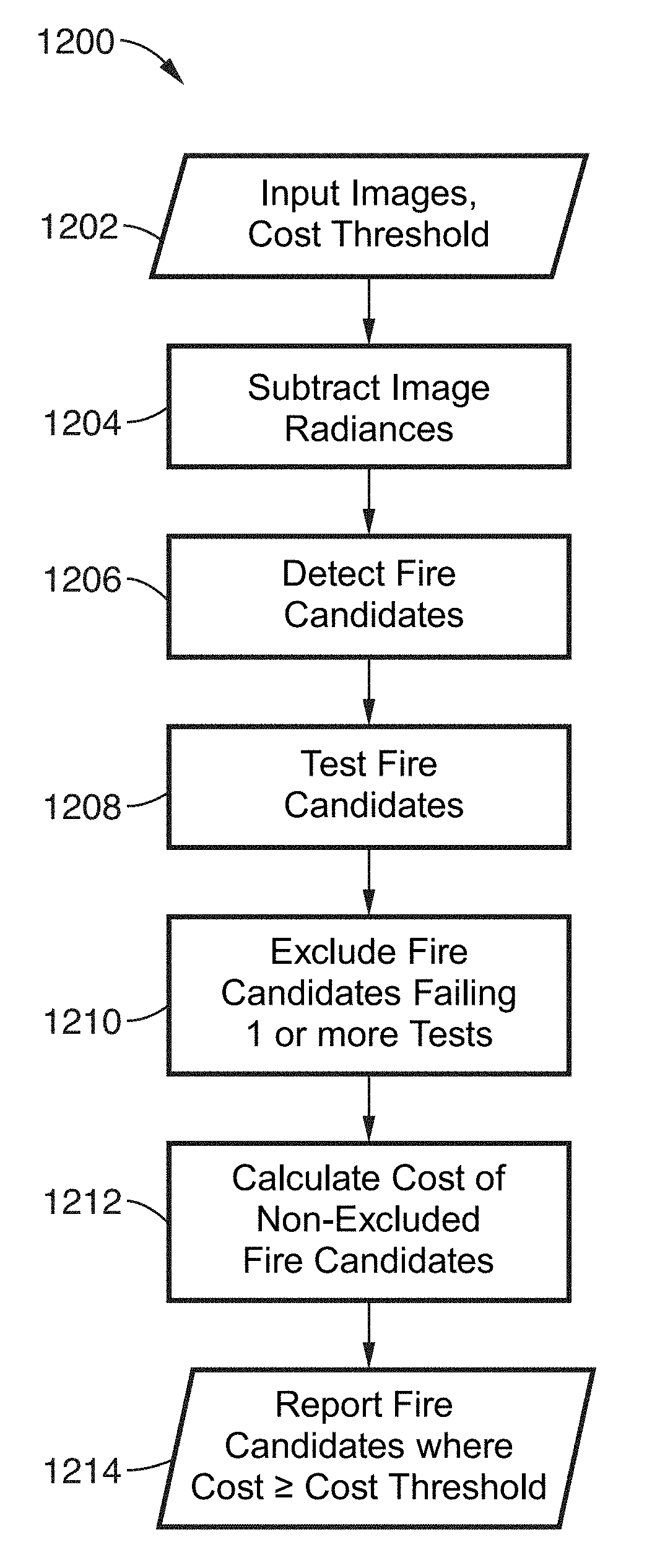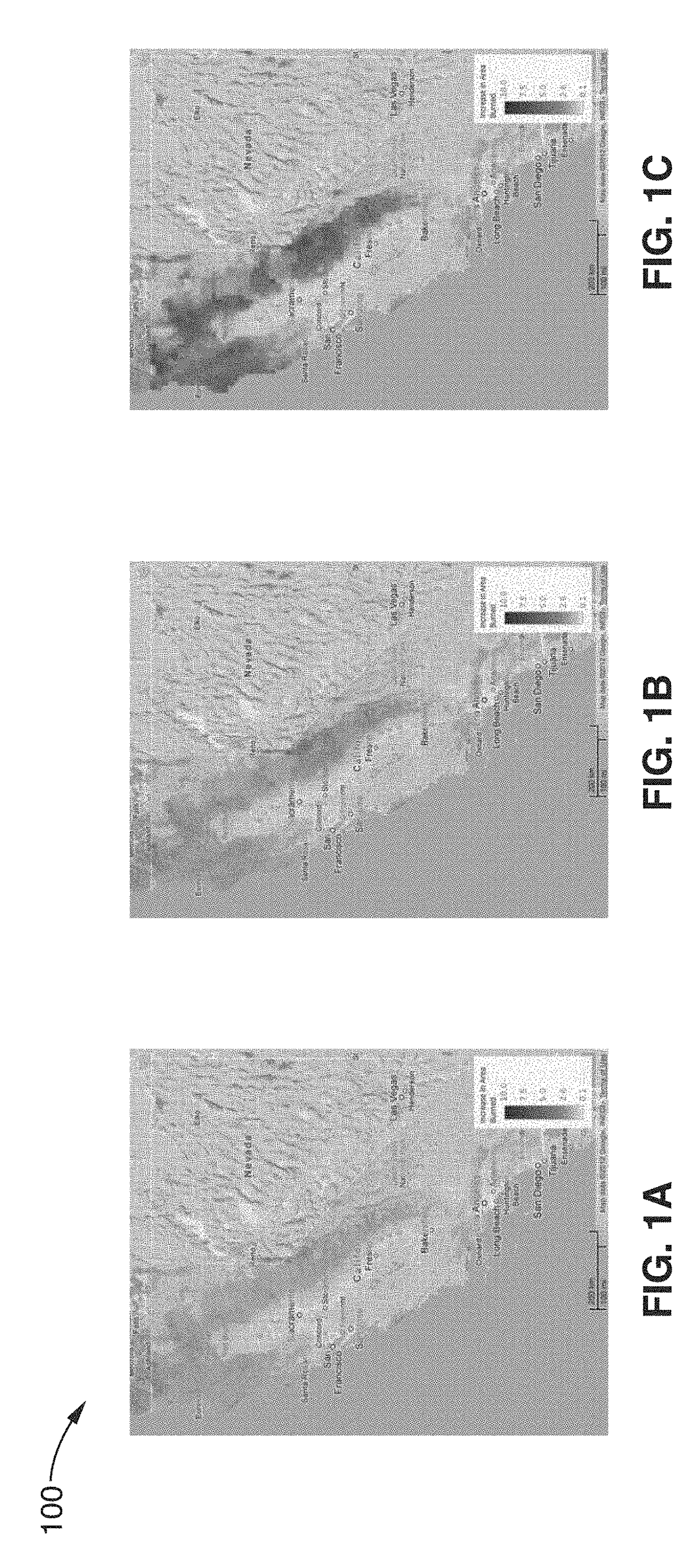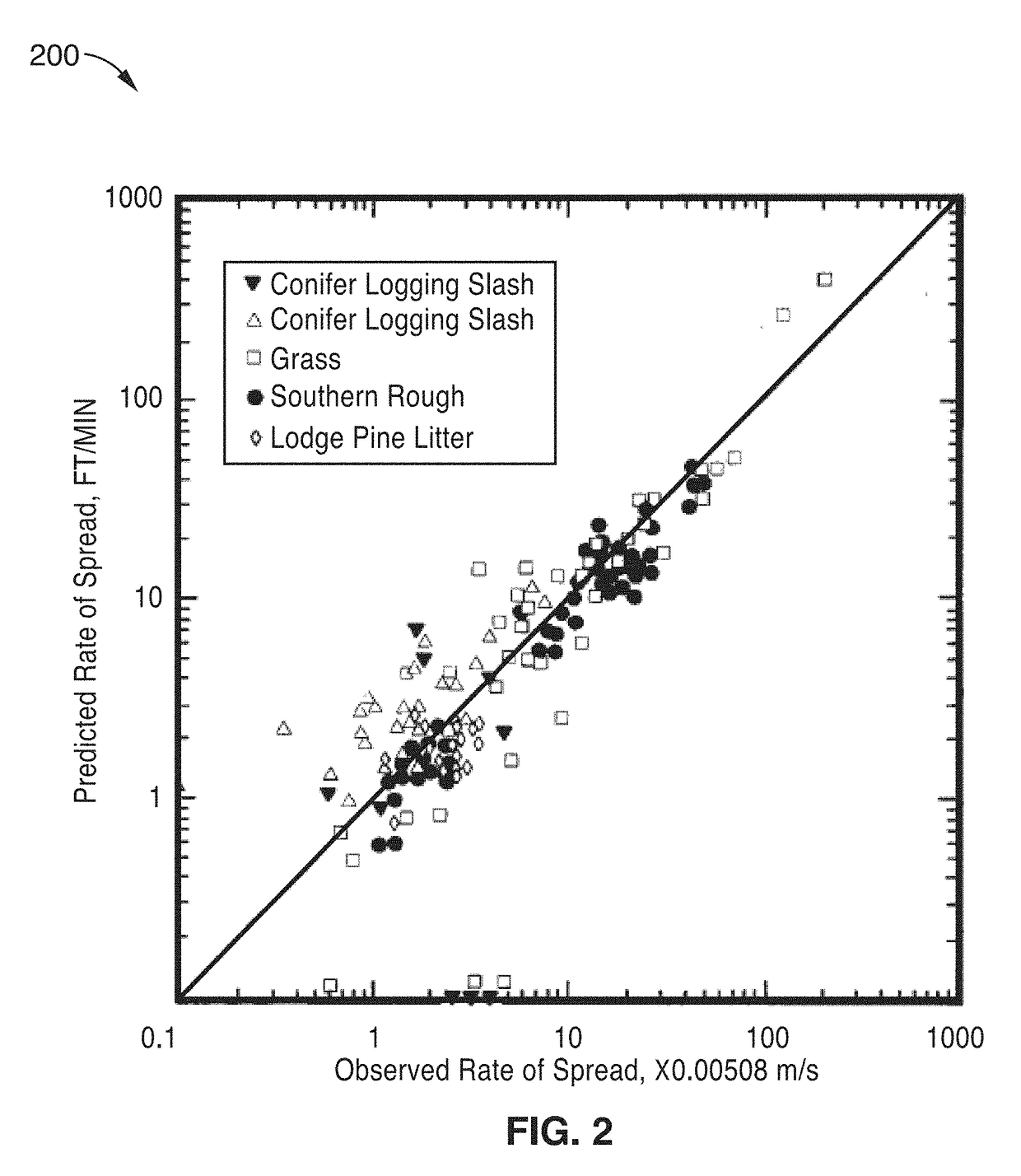Fire urgency estimator in geosynchronous orbit (FUEGO)
a geosynchronous orbit and urgency estimator technology, applied in the field of fire detection, can solve the problems of fires that grow to potentially unmanageable sizes, lack of sensitivity and rapid response times of wildfire detection systems,
- Summary
- Abstract
- Description
- Claims
- Application Information
AI Technical Summary
Benefits of technology
Problems solved by technology
Method used
Image
Examples
Embodiment Construction
[0049]1. Introduction
[0050]1.1. Overview
[0051]Fire managers have to make difficult decisions about the allocation of resources for fire suppression. Allocations of suppression resources are based on numerous factors, including consideration of: the number of fires, fire location, potential fire damage to homes, fire impact on human life, and fire harm to natural resources. In the US, this is done at the Boise National Interagency Fire Center (NIFC) for all federal agencies. The ability to provide fast, reliable information on fire locations, especially when they are very small (2), would enhance fire management greatly, and potentially lower fire suppression costs.
[0052]Currently, fire managers rely on diverse sets of information to assess the location of fires. These include information on lightning strike locations, observations of fires from aircraft and fire lookouts, and on-the-ground observations from field personnel and the public. This network of data is not ideal for catchi...
PUM
 Login to View More
Login to View More Abstract
Description
Claims
Application Information
 Login to View More
Login to View More - R&D
- Intellectual Property
- Life Sciences
- Materials
- Tech Scout
- Unparalleled Data Quality
- Higher Quality Content
- 60% Fewer Hallucinations
Browse by: Latest US Patents, China's latest patents, Technical Efficacy Thesaurus, Application Domain, Technology Topic, Popular Technical Reports.
© 2025 PatSnap. All rights reserved.Legal|Privacy policy|Modern Slavery Act Transparency Statement|Sitemap|About US| Contact US: help@patsnap.com



